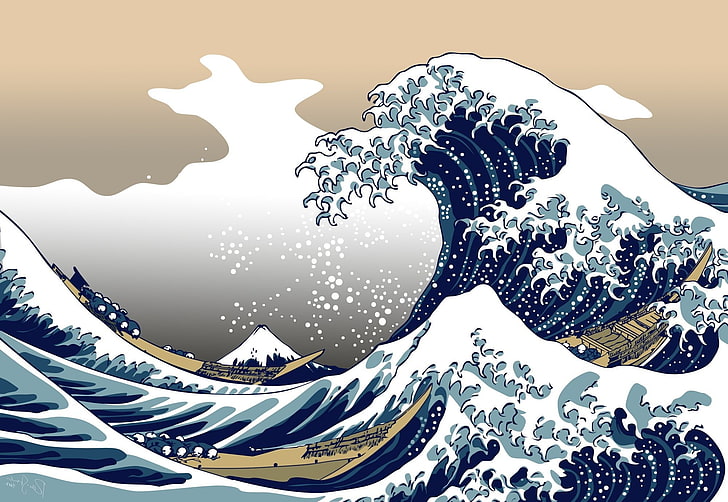


Must he return to the ocean in order to become a young man? The answer arrives in the form of a mythic fish.

Years pass, but still Naoki does not grow. On a stormy winter’s day, a baby boy, Naoki, is swept into a fisherman’s boat by a great wave.

Most of our art in the classroom is one, or a combination of, the following: Drawing: pencil, ink, pastel, chalk, charcoal Painting: tempera or watercolor Printmaking: creating multiple images by transferring ink from a stamp or plate Collage: shapes that are cut and pasted to a surface Sculpture: clay, metal, cardboard, or other 3-D materials Textiles: stitchery or weaving Technology: photography, computer art Styles of art: Realistic: objects look as they do in real life Abstract: objects are based on real-life, but are changed artistically Nonobjective: a design no recognizable objects are found other than lines, shapes, colors, etc.Hokusai’s classic woodcut of a majestic wave becomes the starting point for a storybook children will want to read again and again. on a surface Craftsmanship- using materials correctly and taking care in the production of a piece of art so that it is neatly presented Studio- a room or space where an artist produces and stores work Portfolio - a collection of work, or the container that holds the collection Positive Space - the shape or object that is the focus Negative Space - the area around the positive space also "leftover" space or background Media- materials used to make art. Elements of Design: Line-a path made by a moving point Shape- an area defined by its outline, geometric or organic Form - a three-dimensional shape Value - the lightness or darkness of an object Color - hues on a spectrum we use a color wheel made of primary, secondary, and intermediate colors Texture - the way something feels or appears to feel Space - the illusion of depth in an artwork Composition- an arrangement of lines, shapes, colors, etc.


 0 kommentar(er)
0 kommentar(er)
